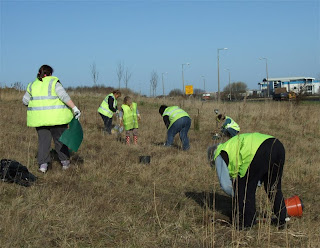Whilst welcoming Government intentions to abandon plans for disposal of public forests, the campaign to protect and restore England's ancient forests must go on, warns the Woodland Trust.
"We welcome the opportunity for a more considered approach to the future of our much loved woodlands but our campaign continues. Whilst we welcome the removal of threats to public access, there is still an acute need for better protection of Ancient Woodland, our equivalent of the rainforests, and restoration of ancient woods planted with conifers. Even if there are no sales of publicly owned forests, the worst of all worlds would be for there to be no change to the loopholes that have allowed 850 ancient woods to be threatened by built development over the past decade. Ministers have made strong commitments over the past few weeks to increase protection for ancient woods, and we will be holding them to these commitments.
As I write, there is a proposal to water down protection for ancient woodland in the planning system. We need your help to defeat this proposal by 28th February.
What's it all about:
www.woodlandtrust.org.uk/en/campaigning/planning-changes/Pages/default.aspx
Take action now:
www.woodlandtrust.org.uk/en/campaigning/planning-changes/Pages/planningpolicychanges.aspx
We must not let public passion and support for our woods and forests die down and now that ownership is no longer an issue, we must not lose sight of the need to increase protection for ancient forests and restore those planted with conifers, a once in a lifetime opportunity for woodland conservation.
Our campaign will continue and we urge everyone to continue to sign our petition and transfer their passion about who owns England's public woods to ensuring that all of England’s woods survive in the future".
Thank you,
Sue Holden,
Chief Executive Woodland Trust



